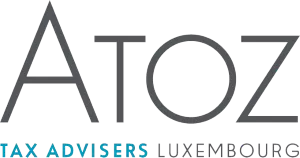Yesterday, the EU Finance Ministers reached a political agreement on the Proposal for a Council Directive amending Directive 2011/16/EU as regards mandatory automatic exchange of information in the field of taxation in relation to reportable cross-border arrangements (the "Directive Proposal").
Our tax alert provides an overview of
- what will need to be reported
- who will be subject to the new reporting duties
- when the reporting will have to be performed
What will need to be reported under the Directive Proposal?
The Directive Proposal aims at the disclosure, by EU intermediaries, of potentially aggressive tax planning arrangements of a cross-border dimension.
Therefore, in order to be subject to mandatory reporting, the arrangement has to:
- be cross-border; and
- be a potentially aggressive tax planning arrangement.
An arrangement is considered as cross-border if, subject to certain conditions, it concerns either more than one EU Member State or, an EU Member State and a third country.
The Directive Proposal does not provide us with any precise definition of the concept of aggressive tax planning. Instead, the thinking is that it would be more effective to capture potentially aggressive tax arrangements through compiling a list of features and elements of transactions that present a strong indication of tax avoidance or abuse.
As a result, cross-border arrangements containing at least one of the characteristic or features that present an indication of a potential risk of tax avoidance, as listed in Annex IV of the Directive Proposal (the "Hallmarks"), are considered as reportable. The Hallmarks are classified in 5 categories:
- General Hallmarks linked to the main benefit test;
- Specific Hallmarks linked to the main benefit test;
- Specific Hallmarks related to cross-border transactions;
- Specific Hallmarks concerning automatic exchange of information and beneficial ownership; and
- Specific Hallmarks concerning transfer pricing.
Most of the listed Hallmarks are quite broad and do not, per se, capture aggressive tax planning or tax avoidance only.
Therefore, in order to be taken into account, they must fulfil a main benefit test. This test will be satisfied if "it can be established that the main benefit or one of the main benefits which, having regard to all relevant facts and circumstances, a person may reasonably expect to derive from an arrangement is the obtaining of a tax advantage". This main benefit test has the merit of not being subject to circular reasoning, as was the case in the June 2017 proposal.
If a cross border arrangement is considered as reportable, the information to be communicated shall contain the following, as applicable:
- the identification of intermediaries and relevant taxpayers;
- details of the Hallmarks;
- a summary of the content of the reportable cross-border arrangement;
- the date on which the first step in implementing the reportable cross-border arrangement has been made or will be made;
- details of the national provisions that form the basis of the reportable cross-border arrangement;
- the value of the reportable cross-border arrangement;
- the identification of the Member State of the relevant taxpayer(s) and any other Member States which are likely to be concerned by the reportable cross-border arrangement; and
- the identification of any other person in the Member State, if any, likely to be affected by the reportable crossborder arrangement.
Who will be subject to the reporting duties under the Directive Proposal?
Cross-border arrangements falling within the scope of the Directive Proposal have to be reported by either an EU intermediary or, under certain conditions, by the taxpayer concerned.
An intermediary is defined as any actor usually involved in designing, marketing, organising or managing the implementation of a reportable cross-border transaction or a series thereof, as well as those who provide aid, assistance or advice, such as:
- a tax adviser;
- an accountant; and
- a lawyer,
who designs and/or promotes tax planning schemes.
In order to be subject to disclosure under the Directive Proposal, the intermediary has to have a connection to the EU based on either tax residence or a permanent establishment it has in an EU Member State through which the services related to the reportable arrangement are provided, its place of incorporation, etc.
The disclosure obligation is not enforceable upon intermediaries subject to legal professional privilege or when there is no intermediary because, for instance, the taxpayer designs and implements a scheme in-house. In these cases, the disclosure obligation is shifted to the taxpayer that benefits from the arrangement, or to another intermediary.
Should the intermediary (or the taxpayer) not comply with its reporting obligations, penalties will apply, the amount of which will have to be determined by the EU Member States in such a way that it is proportionate and has a dissuasive effect.
Once the local tax authorities have collected the information from either the EU intermediary or the taxpayer, they will be required to automatically exchange this information with the tax authorities of all other EU Member States through a centralised database.
The content of this article is intended to provide a general guide to the subject matter. Specialist advice should be sought about your specific circumstances.



